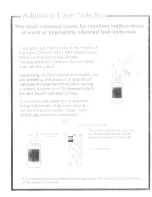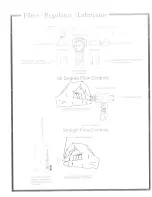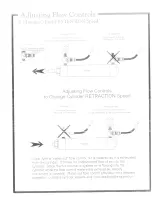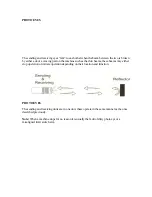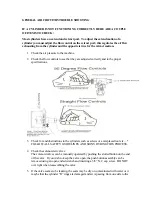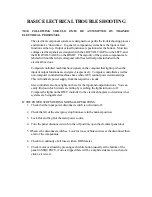
BASIC ELECTRICAL TROUBLE SHOOTING
THE FOLLOWING SHOULD ONLY BE ATTEMPTED BY TRAINED
ELECTRICAL PERSONNEL.
The electrical component systems are designed to expedite the troubleshooting process
and minimize “down time”. In general, component systems have the input or feed
functions at the top. Output or load functions are positioned at the bottom. Most two
voltage electrical panels are designed with the LOW VOLTAGES on the LEFT, and
the HIGH VOLTAGES on the RIGHT. The majority of the system components are
labeled with numbers that correspond with the electrical prints included in the
electrical box door.
Computer controlled machines have signals on the computer that light up when the
input or output functions are energized, respectively. Computer controlled as well as
non-computer controlled machines have white 120V control power terminal strips.
This will indicate power supply from the respective circuits.
Idec controllers also have lights on them for the input and output functions. You can
easily find out which circuits are failing by watching the lights turn on or off.
Compare the lights on the IDEC controller to the electrical diagram to determine what
systems are being affected.
IF THE POWER STOPS DURING NORMAL OPERATIONS:
1. Check that the input power disconnect switch is not turned off.
2. Check that all of the emergency stop buttons are in the normal position.
3. Lock Out and Tag Out the main power source.
4. Turn the panel disconnect switch in the off position, open the electrical panel door.
5. Observe the disconnect switches. Look for loose or broken wires at the disconnect then
at all of the components.
6. Check for continuity of all fuses with an OHM meter.
7. Check motor overloads by pressing each white button (usually at the bottom of the
panel in SEQUENCE, if one is tripped there will be a slight resistance to touch and a
click as it is reset.








